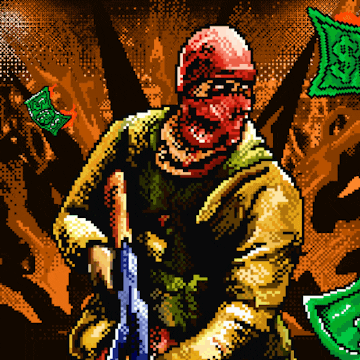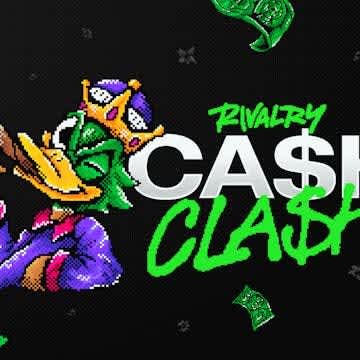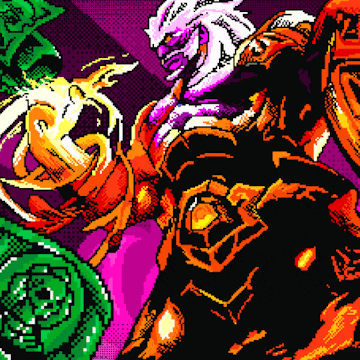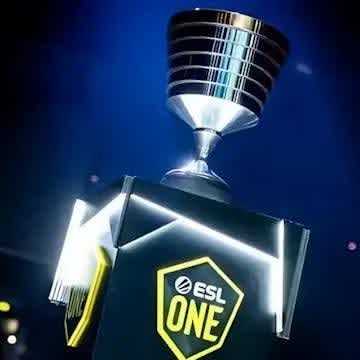The Rise and Fall of Fitch
Four legs in the morning, two in the afternoon, and three at night, every pro invariably has to work their way up, reach their the pinnacle of their powers, and eventually decline, but recently one player more than any other has expedited the last two phases of the process: Bektiyar "fitch" Bahytov.
After a decade plus of playing Counter-Strike, Fitch joined Gambit, the newly crowned major champions and immediately impressed as he helped carry the sans-Zeus lineup to a top-four placing at DreamHack Masters Malmö. Like Abay "Hobbit" Khassenov before him, Fitch’s dominating debut performance earmarked him in the eyes of the public as yet another oncoming Kazakhstani star, but on February 6th 2018, little more than six months after his pickup, Fitch was benched by the Gambit organization.
It’s a tri-folded contrast. First, there’s the surprise that at 25 Fitch was finally cleared to join a significant team. Then, there’s his powerful opening performances at Malmö and ESG Tour Mykonos shortly thereafter, but later there’s also this smattering of poor showings that ostensibly shoved him out the door.
So what happened? How did he suddenly grow up overnight and why did he fall down the next day?
The King's Gambit
To understand Fitch, you have to start with the many misconceptions surrounding Gambit’s quagmire win at the PGL Major in Krakow. While the relative ease of their draw certainly abridged impossibility’s prefix, the vacuum created by the still uncanny outcome forced the creation of an additional something, some puffery, some expansion of an image set up to explain the shadow cast over our own expectations. The result was an emphasis on narrative and character that propped up Gambit’s in-game leader, Danylo "Zeus" Teslenko, as a singular mastermind and prodigal son.
So when he left the team immediately after their win, I think there was some misapprehension of what he took with him, what stayed on the table, and what Gambit needed in their next iteration. On one hand, Zues did clearly bring some tactical acumen to the team which allowed Gambit to be successful on maps like Train and Inferno, and he could make critical mid-game adjustments as exemplified in the Astralis semifinal. However, on the other hand, Zeus could be a liability as an individual player. While Zeus did play archetypal support roles on the T-side during his time on Gambit, he took some also unorthodox CT-positions as an less-skilled in-game leader.
Unlike his very support finish to his first run with Na’Vi, during his time with Gambit, Zeus played many high-traffic CT positions that either centered around short range dueling or allowed for individual aggression for example A-long on Cobblestone, certain in site A positions on Inferno, and ladder room and E-box-esque forward areas on Train. While Zeus could be decent at these positions he was occasionally targeted and abused by teams like CLG who emphasized preparation.
Enter, Fitch
So when it came to pass that Zeus would be removed and Dauren "AdreN" Kystaubayev would become the in-game leader in his stead, there was an amorphous hole that had to be filled. Should they get a player who was supportive player on the T-side and more aggressive (and hopefully effective) on the CT-side? Or would AdreN slide back a bit on offense when IGLing thereby making room for more all-round action-oriented player? Furthermore, if they got a younger aimer, he could work well with AdreN's looser calling, but if they instead got a more veteran player perhaps Gambit could better pull off their very coordinated retake-centric CT-style on certain maps.
By picking up the unknown Fitch, the public might have assumed that Gambit was grabbing a young, potent fragger to radically shift the team towards a more aim-centric style after the departure of Zues. But his selection hardly lines up with that idea. While Fitch might be a firepower upgrade over Zeus, the delta between the two was wildly exaggerated by Fitch’s surprise team-leading performances early in his run with Gambit. He looked like a good player in Tengri, but there were far greater standouts on other lesser teams in the CIS scene such as Denis "electronic" Sharipov on Flipsid3, Pavel "hutji" Lashkov and Nikolay "mir" Bityukov on Vega Squadron, and perhaps even Aleksandr "SNk" Semkin on Fitch’s own team.
The 25 year old Kazakhstani wasn’t even necessarily set up to be the star even on the lesser lineup. While on some maps he was tasked some kill-oriented positions, he could also play some very supportive spots such as drop-down room on Cobblestone. And on the T-side, Fitch seemed to be tasked with a Taco-esque assignment either doing hard entries or playing the opposite side of the map to sell fakes or lurk.
While a cynic could say that Gambit picked up Fitch out of friendship or some sort of nationalistic impulse (Gambit was 4/5ths Kazakhstani with Fitch), the CIS team’s top-four placing at DreamHack Masters Malmö suggested that he did suit the team’s specific needs quite well. Fitch neatly fit into Zeus's vacated close contact spots on Train and Cobblestone while also stepping into a more permanent entry role on the T-side as AdreN played more back after taking the IGL mantel.
Fitch's Role
In an interview with HLTV at the event, Fitch described his new role on the team:
And so he did. Fitch drastically exceeded expectations in this first outing, looking far more like the super-skilled up-and-comer that he never was. With the exception of the Ninjas in Pajamas best-of-three series which Gambit lost in group stage, Fitch led the team in terms ADR in all of their other their Malmö matches. His performance in Gambit’s 2-0 win over Astralis in the quarterfinals especially stands out with statics like a 19+ K-D, .98 KPR, and a 92.7 ADR detailing his star-esque round to round output.
But Fitch’s success at Malmö and for a few weeks thereafter at tournaments like ESG Tour Mykonos, and ROG Masters 2017 - EMEA probably wasn't purely due to the role change. While individual performance varies wildly on a variety of factors including somethings more intangible such as mood and mentality, there are several more direct factors that could have likewise bolstered his performance.
First, Gambit came into this tournament not as the major winner, but as an unknown entity with a new map pool and play style. Also, in the wake of the major of and the August player break, many teams came into this tournament with a new lineup, little practice, or both. On the T-side, Gambit's new style looked more loose than their previous iteration which might have given them the leg up versus teams who were or trying to be more tactical with equally little practice. It’s also the case that very few top players had ever played against Fitch before on LAN as he had never played in a premier-level event previously.
There is also the accuracy changes to the CZ 75 to consider. Many pro saw the mid-August alterations as a buff, which made the weapon and force buys utilizing it especially popular at these late summer tournaments. Not only was Gambit fairly successful at Malmö with force buys, Fitch seemed especially posed to succeed as he seemed to favor the weapon even before the changes.
However, all of these advantages were temporary. With two straight best-of-three losses to Mousesports at ECS Mykonos and ROG masters, and lackluster results online, Gambit decided to switch things around with Mikhail "Dosia" Stolyarov taking up or partially taking up the in-game leading role for EPICENTER and onwards. Accordingly, AdreN played somewhat differently on the T-side, entering more on maps such as Cache, but still lurking heavily on Train with Fitch now doing the inverse.
Teams improved, caught on, and surpassed Gambit as they tried to reinvent themselves. By the time Gambit reached their next premier-offline event, EPICENTER, teams like FaZe had come into their own while SK ready to unleash their new winning lineup with Ricardo "boltz" Prass. And at that event specifically, Gambit happened to be grouped with the surging FaZe in addition to Virtus. Pro who had last hurrah tournament run with their classic lineup, which led to their early elimination.
Gambit's Mediocrity Returns
Despite the switches, Gambit’s T-side, which could struggled a bit a their opening tournaments, still looked stagnant, and their opponents seemed to have a progressively easier time blowing by Gambit’s CT-sides. For example, when FaZe played Gambit on Cache, they seemed very aware of Fitch’s tendency on the CT-side to move push into A main. In round 21, they tried to avoid him outright by pincering through squeaky and mid, and in round 22 they stacked three in A main early in the round, which Fitch haplessly ran into.
At the end of the FaZe series. Fitch ended the map and series with team lows in K-D, ADR, and KAST, an increasingly common occurrence for new pickup. In an interview at IEM Oakland, Hobbit said:
Gambit made the playoffs in Oakland but lost unceremoniously to Cloud9 in the first round in the playoffs, and story repeated soon thereafter. At DreamHack Winter 2017, Gambit topped their group, but lost immediately in the semifinals in a third straight best-of-three loss to mousesports. While Gambit and Fitch could still win best-of-ones and even make playoffs, they now looked incapable of winning big series regressing almost perfectly to their pre-PGL Major condition.
And they continued their mediocrity at the most recent major. Gambit’s losses to Quantum Bellator Fire (16-19), SK (10-16), and Fnatic (2-16) sent them home before the playoffs for the first time at a Major since MLG Columbus 2016. And it was Fitch’s worst event yet. He only racked up 52 kills across five maps in what would his weakest and final outing with Gambit.
Now, you can certainly criticize Gambit’s subsequent pick up of Denis "seized" Kostin, given his individual level level since September 2016, but in isolation it’s hard to say that the removal of Fitch wasn’t justified. While you have to credit him for his early tournament performances, his output later at EPICENTER, IEM Oakland, DreamHack Winter, and the ELEAGUE Major: Boston was below par and only getting worse.
Farewell Fitch
Now, it might not be completely over for Fitch, maybe he we can see him on one these CIS teams which have created so many upsets at the ELEAGUE Major or maybe he even impressive enough there to earn another shot with a bigger team. Nevertheless, I think his rise and fall in the last six months tells us more than what happened than or who he will be in the future.
First, I think his initial run demonstrates how the core of Gambit is able to develop talent. Unlike a team like NiP who has always had more traditional stars in Patrik "f0rest" Lindberg and Christopher "GeT_RiGhT" Alesund, Gambit’s veteran duo of Dosia and AdreN seem more set in roles that help out their new pickups rather than emphasis their own abilities. While much has been said of Dosia’s slow and “selfish” play in late round scenarios, he does play all of the most difficult, utility-oriented, “supportive,” roles on the CT-side. Likewise, even during his peak performances in early 2017 made, AdreN took up hard roles and made many difficult entries on the T-side. It was actually HObbit who was given the most impactful, kill-oriented CT-positions and given a chance to follow up on one of the game’s best site openers in AdreN.
But even more broadly, Fitch’s inability to find sustained success speaks to the difficulty of moving up to the big leagues. When up-and-comers move up to better teams, they face tougher opponents, better scouting, more public pressure, and usually have to play lesser roles. The overwhelming majority of would-be pros will never be given a chance to play at the top-level, and a good few of the ones who do will never be able to find their feet and will soon fall back down.
Each additional data point stuck in the sea of the mean demonstrates the excellence of the outliers. In the greater context of the scene, that might just be the best role Fitch can play moving forward.







